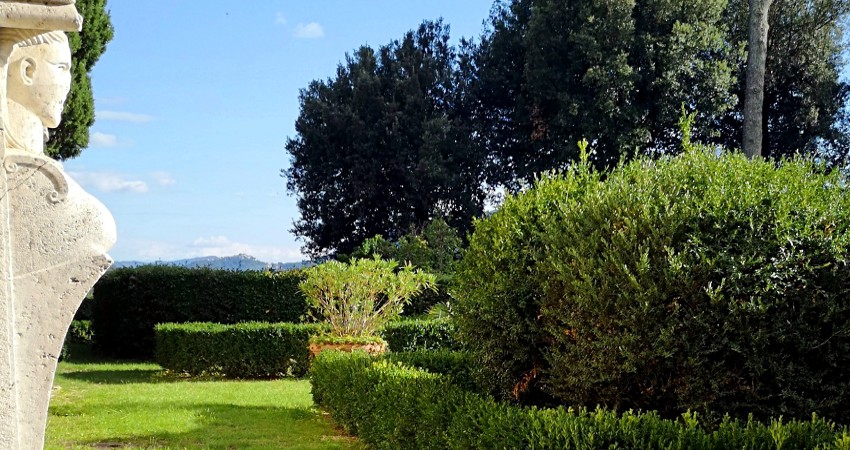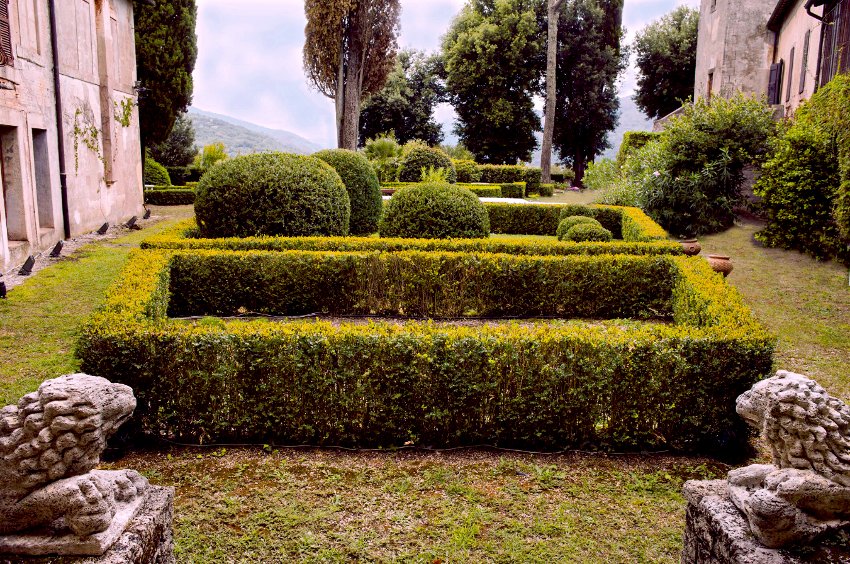Gardens of Horace
The Formal Garden and the Belvedere



The Formal Garden is a secret garden, hidden on the roof of the fortress. It was created in the 17th century by the Nuñez Sanchez, who were a powerful family of Spanish and Portuguese origin, as well as able art patrons.
It was originally a Paradise garden, in the style developed in Historic Spain, incorporating both elements of garden design and of advanced water techniques coming from the beautiful ancient Persian and Islamic gardens.
It has a Belvedere terrace overlooking the beautiful views which were to be later immortalised by the German painter Jacob Philipp Hackert (1737-1808) as an ideal picturesque view.
Enclosed between the court and the Belvedere, it had a central cross axis in the four cardinal directions, with quadrants of box hedges. Probably at the time there were also roses and pomegranate trees. The garden made use of the huge water cisterns built at the top of the fortress since the middle ages. They were incorporated and probably enlarged by the architect employed by the Nuñez for the use of the garden, in the historic Spanish tradition.
When Alessandro del Gallo and his wife Julie Bonaparte settled in Mandela in the 19th century, they turned the Castle into a comfortable stately home.

Two jardins d’hiver in the French style were added to the sides of the court shaped building, which embraced the garden in a U shape. This allowed to walk inside the house along corridors since the rooms open one into the other, and to have rooms warmed up by the sunshine in winter and to admire the garden protected from the sun in summer.
The grand square patio of the historic Spanish tradition built by the Nuñez was eliminated in order to allow carriages to arrive up to the keep. The new additions changed the Paradise garden design, even though it is still possible to see the underlying cross axis structure. One part of the garden was rearranged in the formal French garden style.
The house and the garden have not changed ever since. Today the garden is planted mainly with a collection of old French rose hybrids of the 19th century, of Chinese provenance, in and around the box hedges, some in the quadrant style, some in the formal French manner.
Some guests, like Ernest Hébert (1817-1908), used to paint en plein air in this garden in the shade of the trees, planted in the area of the portico.
Access is by arrangement only.